In recent years, RFID (Radio Frequency Identification) technology has gained significant traction in various industries. Its applications range from inventory management and supply chain optimization to contactless payments and access control systems. As the demand for sustainable and eco-friendly materials increases, the development of RFID wooden cards has emerged as a notable trend in the industry. This article explores the growing popularity of RFID wooden cards, their benefits, and the future prospects of this innovative technology.
Introduction

RFID technology has revolutionized the way we interact with everyday objects and systems. It enables the wireless transfer of data by using electromagnetic fields, allowing for efficient identification and tracking. Traditional RFID cards are typically made of plastic or PVC materials, but with the growing emphasis on sustainability, the development of RFID wooden cards has gained momentum. These cards combine the benefits of RFID technology with the eco-friendly nature and unique aesthetics of wood.
What are RFID Wooden Cards?
RFID wooden cards are smart cards that incorporate RFID technology and are crafted using wood as the primary material. They consist of an embedded RFID chip and an antenna, encased within a layer of wood. The RFID chip stores and transmits data wirelessly, while the wooden exterior provides durability, a natural feel, and an attractive appearance.
Advantages of RFID Wooden Cards
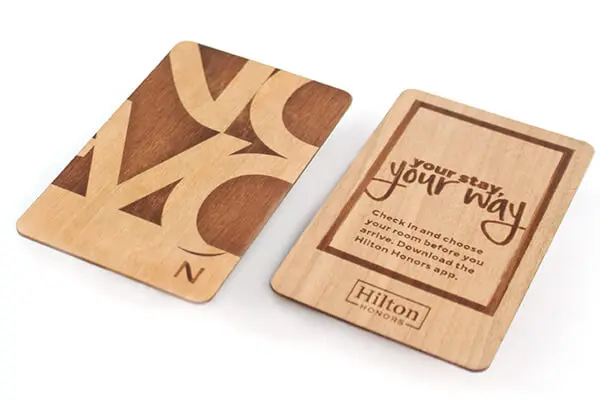
Environmental Sustainability
One of the key advantages of RFID wooden cards is their environmental sustainability. Wood is a renewable resource that can be responsibly harvested and processed. Unlike plastic cards that contribute to pollution and waste, wooden cards are biodegradable and have a significantly lower carbon footprint. RFID wooden cards appeal to environmentally conscious individuals and businesses seeking eco-friendly alternatives.
Aesthetics and Customization
RFID wooden cards offer a unique and visually appealing alternative to traditional plastic cards. The natural grain patterns, textures, and colors of different wood types create an aesthetic appeal that plastic cannot replicate. Additionally, wooden cards can be easily customized with engravings, logos, and other personalized details, making them ideal for branding and marketing purposes.
Durability and Strength
Contrary to common assumptions, RFID wooden cards are highly durable and robust. Wood is known for its strength and longevity, and when properly treated and sealed, wooden cards can withstand daily wear and tear. With advancements in protective coatings and finishes, RFID wooden cards can maintain their functionality and appearance over extended periods.
Applications of RFID Wooden Cards
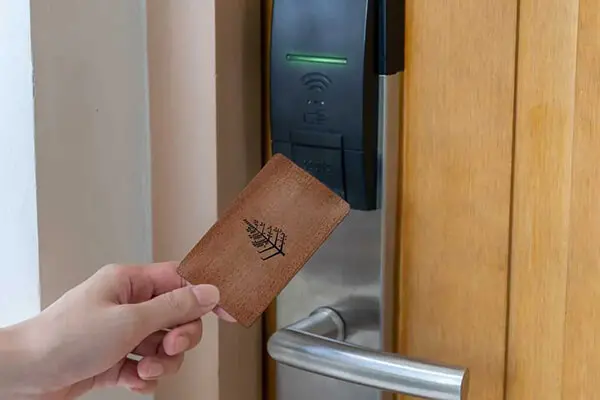
Access Control and Security
RFID wooden cards find extensive use in access control systems, where they replace traditional key cards or proximity cards. These cards allow for secure and convenient entry into buildings, rooms, or restricted areas. RFID technology enables quick identification and authentication, reducing the risk of unauthorized access and enhancing overall security.
Payment and Ticketing Systems
The integration of RFID technology into wooden cards has also expanded their applications in payment and ticketing systems. RFID wooden cards can be used as contactless payment cards, allowing users to make purchases by simply tapping the card on a compatible reader. Similarly, in transportation systems, these cards can serve as electronic tickets, providing a seamless and efficient user experience.
Branding and Marketing
The unique aesthetics of RFID wooden cards make them an excellent tool for branding and marketing campaigns. Businesses can leverage the natural appeal of wood to create memorable and visually striking cards that align with their brand identity. Whether used as loyalty cards, gift cards, or promotional items, RFID wooden cards leave a lasting impression on customers and reinforce brand recognition.
Technological Advancements
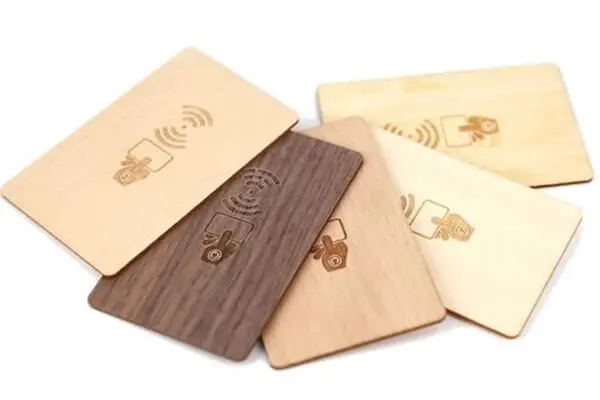
Miniaturization of RFID Chips
As technology progresses, RFID chips continue to become smaller and more compact. This miniaturization allows for the integration of RFID technology into thinner and more elegant wooden cards, without compromising functionality. Smaller RFID chips also contribute to improved power efficiency and signal strength.
Enhanced Data Storage and Security
Advancements in RFID technology have led to increased data storage capacities and enhanced security features. Modern RFID wooden cards can store a greater amount of information, enabling more versatile applications. Moreover, encryption and authentication protocols ensure the secure transmission and storage of sensitive data, protecting users from potential breaches.
Integration with IoT (Internet of Things)
The synergy between RFID technology and the Internet of Things (IoT) presents new opportunities for RFID wooden cards. By integrating RFID cards with IoT devices, users can access interconnected systems and services effortlessly. For example, RFID wooden cards can enable personalized experiences in hotels, control smart home devices, or facilitate seamless interactions with public infrastructure.
Challenges and Solutions
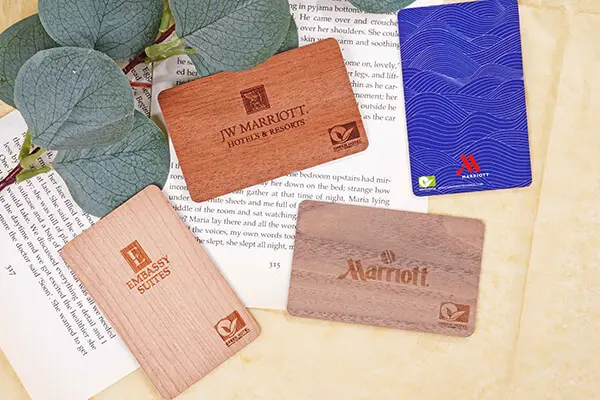
Signal Interference and Range Limitations
Wood, being an organic material, can interfere with radio waves and potentially limit the range of RFID signals. However, advancements in antenna design and RFID chip placement have mitigated these challenges. By optimizing the card’s construction and utilizing stronger RFID readers, signal interference can be minimized, allowing for reliable and extended-range communication.
Cost and Manufacturing Complexity
Compared to traditional plastic cards, RFID wooden cards may have a slightly higher production cost. The procurement of sustainable wood, precise crafting, and the integration of RFID technology contribute to the overall manufacturing complexity. However, as demand grows and production processes improve, economies of scale and advancements in manufacturing techniques are expected to reduce costs.
Standardization and Compatibility
Standardization plays a crucial role in the widespread adoption of RFID wooden cards. Ensuring compatibility with existing RFID systems and protocols is essential for seamless integration. Industry collaboration and the establishment of standards are key to addressing this challenge. Efforts to create universal specifications and interoperability will simplify the implementation of RFID wooden cards across various applications.
Future Outlook and Opportunities
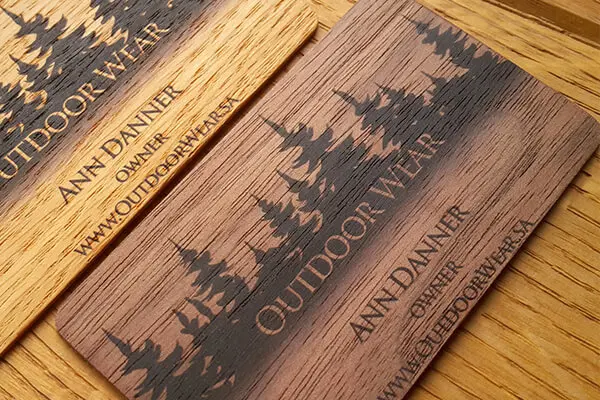
Industry Collaboration and Innovation
The future of RFID wooden cards looks promising, with increasing industry collaboration and innovation. Manufacturers, technology providers, and businesses are working together to enhance the functionality and appeal of these cards. Collaboration fosters knowledge sharing, accelerates advancements, and drives the adoption of RFID wooden cards in diverse sectors.
Expansion into New Sectors
As awareness of the environmental impact of plastic cards grows, RFID wooden cards are likely to expand into new sectors. Industries such as hospitality, tourism, events, and retail are already embracing the use of sustainable materials. The unique combination of RFID technology and wooden aesthetics makes these cards a compelling choice for businesses seeking differentiation and eco-friendly solutions.
Advancements in Sustainable Materials
The development of RFID wooden cards aligns with the broader trend of utilizing sustainable materials. In the future, advancements in materials science may introduce innovative alternatives to traditional wood, such as bamboo or other fast-growing fibers. These advancements will further enhance the eco-friendliness and durability of RFID cards while offering a wider range of options to consumers.
Conclusion
RFID wooden cards represent a compelling innovation in the realm of smart cards and sustainable materials. Combining the benefits of RFID technology with the natural appeal of wood, these cards offer environmental sustainability, aesthetic customization, and durability. Their applications span access control, payment systems, and branding initiatives. Despite some challenges, technological advancements, industry collaboration, and the expansion into new sectors ensure a promising future for RFID wooden cards.
FAQ
How does an RFID wooden card work?
An RFID wooden card works by incorporating an embedded RFID chip and antenna. When the card is within the range of an RFID reader, the reader emits radio waves that power the RFID chip. The chip then transmits the stored data back to the reader, allowing for identification, authentication, or data exchange.
Can RFID wooden cards be recycled?
Yes, RFID wooden cards can be recycled. Wood is a biodegradable and renewable material, making it suitable for recycling. However, it’s important to remove the RFID chip and antenna before recycling the wooden component.
Are RFID wooden cards secure against hacking?
RFID wooden cards can incorporate security features such as encryption and authentication protocols to protect against hacking. These measures ensure the secure transmission and storage of data, making it difficult for unauthorized parties to access or manipulate the information.
What industries can benefit from RFID wooden cards?
Various industries can benefit from RFID wooden cards. Some examples include hospitality, events, retail, transportation, access control, and branding. The eco-friendly nature and unique aesthetics of RFID wooden cards make them appealing to businesses and individuals seeking sustainable and visually striking solutions.
Where can I purchase RFID wooden cards?
RFID wooden cards can be purchased from specialized manufacturers, suppliers, or distributors like Nexqo. It’s advisable to research reputable suppliers and compare options to ensure product quality and compatibility.
.png)
